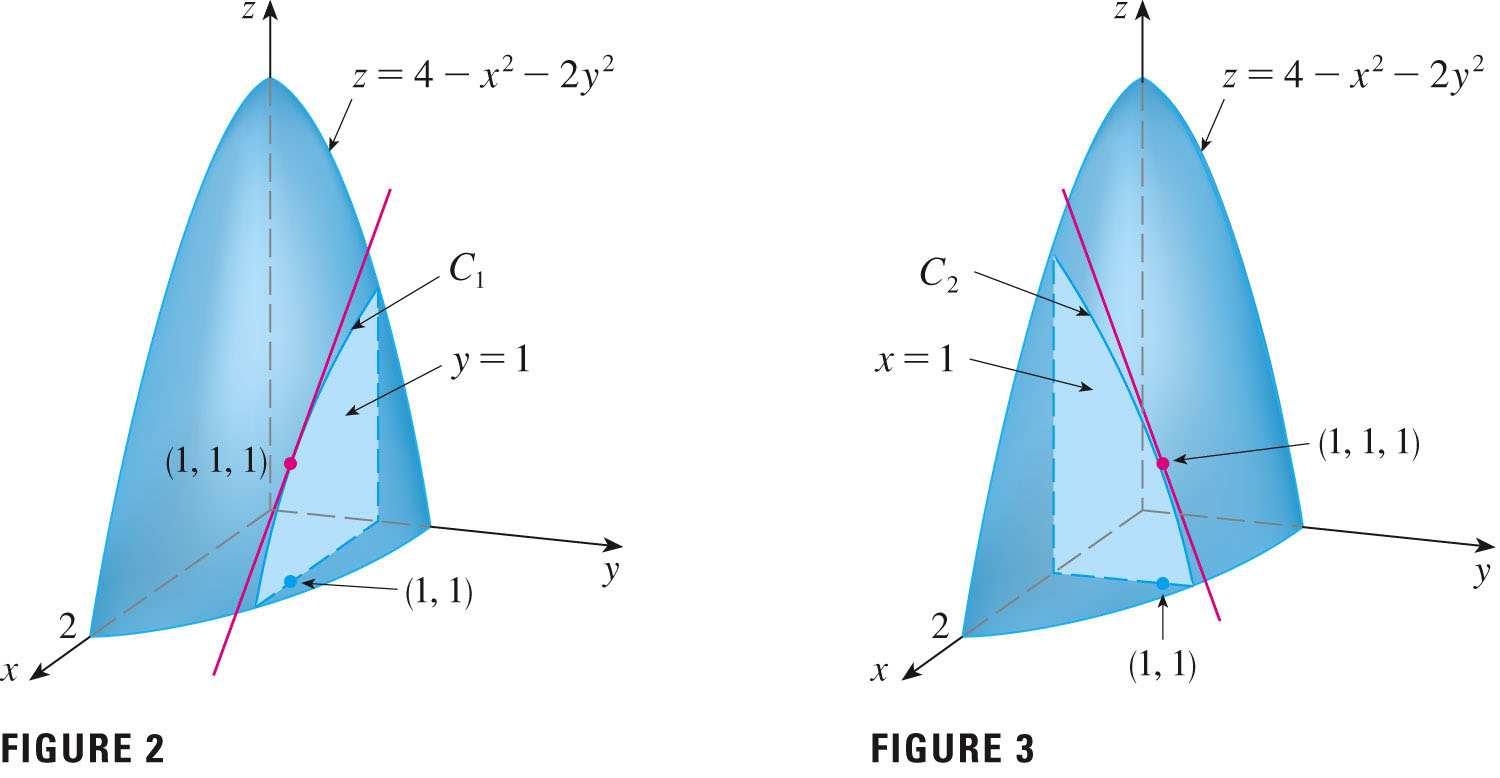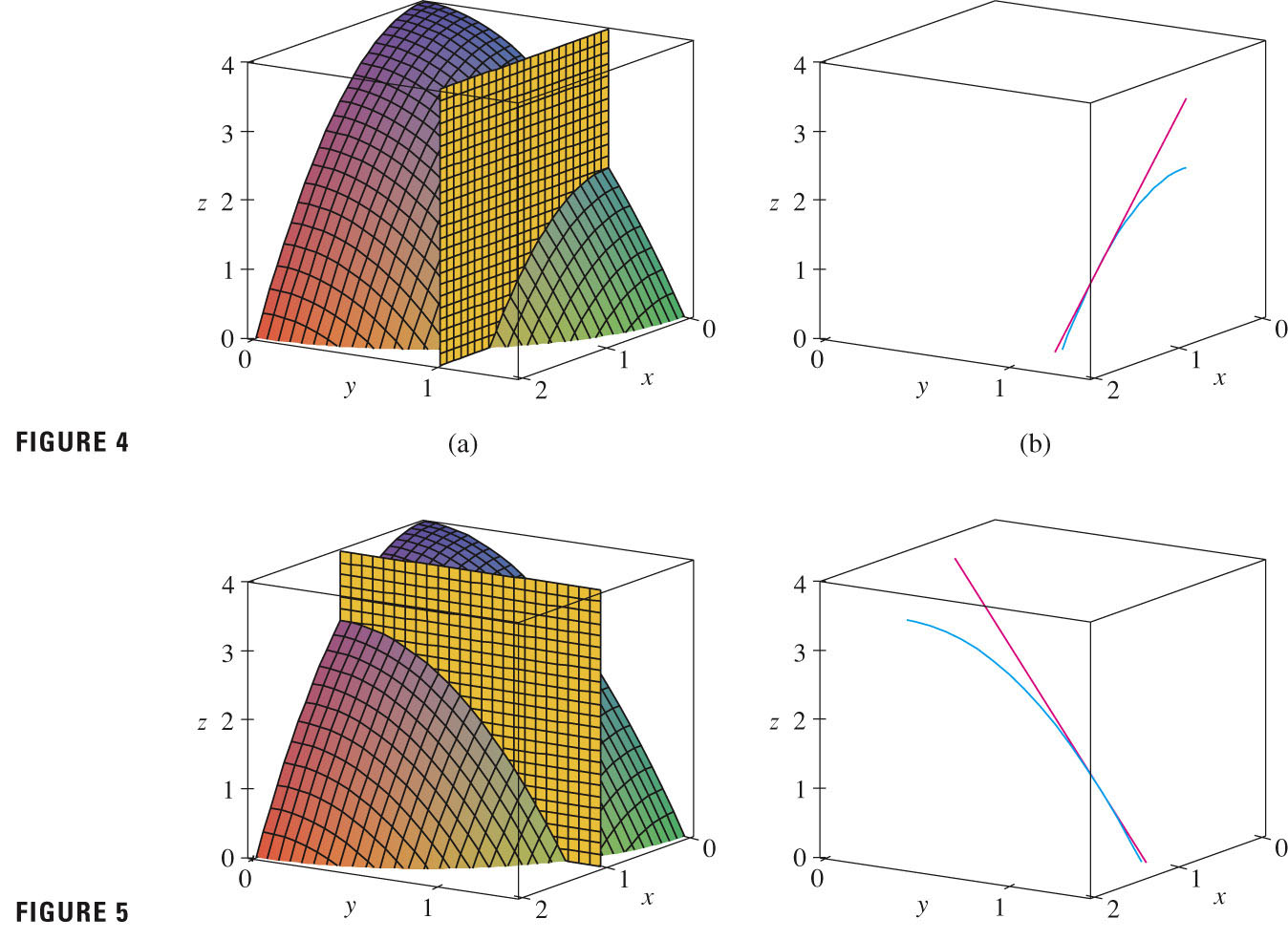- 14.2 problems are due today.
- Your quiz is returned: I want to show you a card trick
illustrating one very important aspect of the quiz....
The second part was about continuity -- you'd already defined a function -- so I was really just looking for $\lim_{(x,y)\to (a,b)}f(x,y)=f(a,b)$.
In the third part I wanted an application. Why is this mathematics useful?
Here is "the most important definition in calculus" -- the limit definition of the derivative function, $f'(x)$: \[ f'(x) = \lim_{h \to 0}\frac{f(x+h)-f(x)}{h} \]
This is what we want to generalize.
- Take a look at Table 1, p. 925. How can we use the univariate idea?
- What about other directions? Think about a topo map -- you can set off in any direction from a point (often): what does the partial derivative mean in any direction?
- #2, p. 935
We think of $y$ as fixed in this derivative. It's not varying. Only $x$ is varying; is variable.
And here's the partial with respect to $y$: \[ f_y(x,y) = \lim_{h \to 0}\frac{f(x,y+h)-f(x,y)}{h} \]
They're easy to compute, actually: e.g., for $f_x$, just imagine that $y$ is a parameter, and differentiate in the univariate way with respect to $x$.
The figures on p. 928 give us this idea very nicely (I hope that my "slicer" from last time does, too).


- #5, p. 936
- #9
- #10
- #21 (first use the limit definition, and then differentiation rules from univariate calculus)
- #24
We think of second derivatives in the univariate world as saying something about curvature, and the same is true in the bivariate case.
- #53, p. 937 (note the notation, p. 930)
- #75, p. 937
- #74, p. 937 (Clairaut's theorem tells us that we don't need to consider $f_{yx}$).